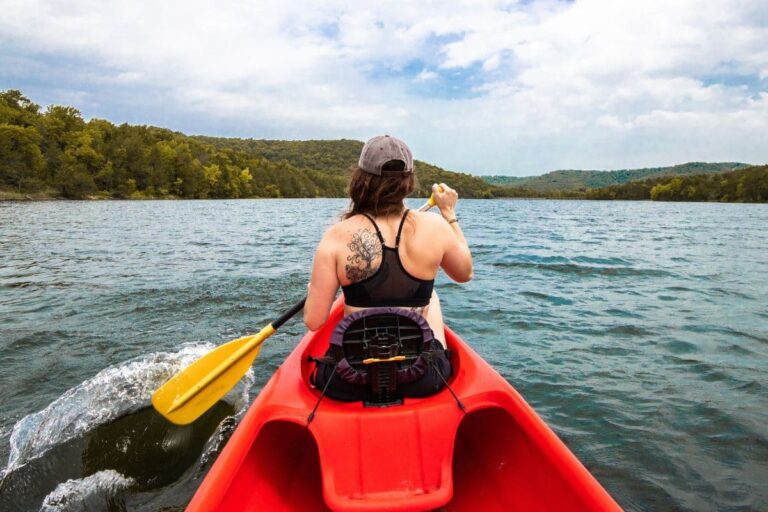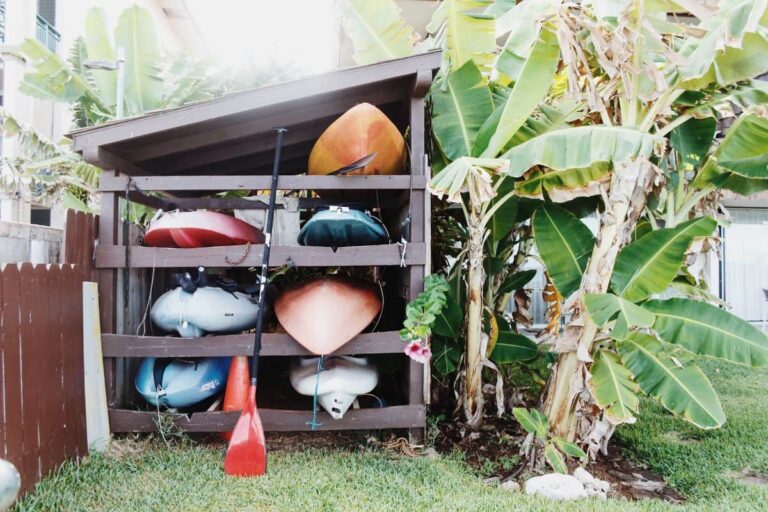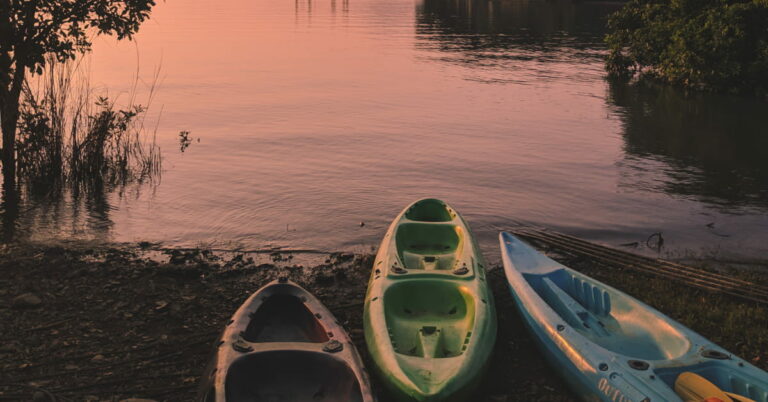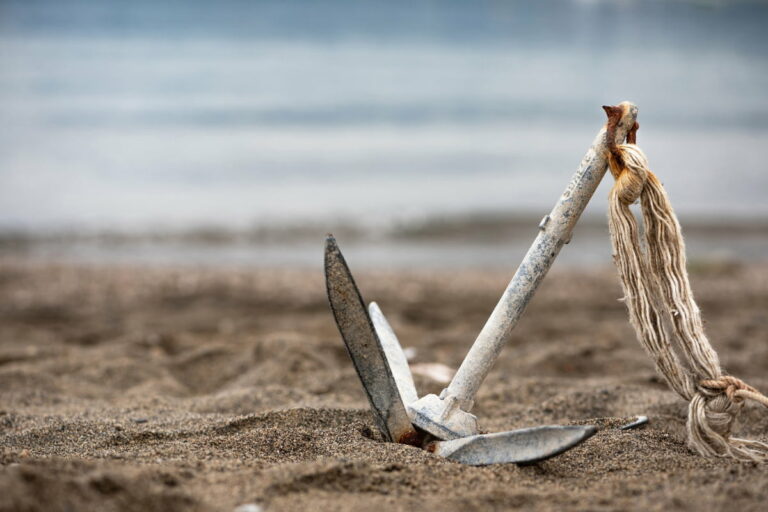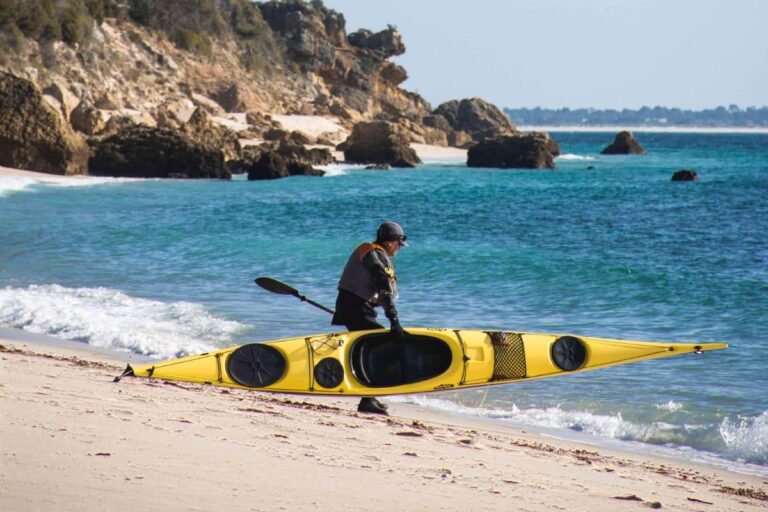What Is A Scupper Hole, And What Does The Plug Do?
Who would have guessed that those holes in the bed of your kayak are actually a safety feature that can save you from sinking, or even drowning in deep water?
Scupper holes are present in the bottom of most sit-on-top kayaks, and they allow water to drain out of the boat, preventing you from sinking. A scupper plug is used anytime your sit-on-top kayak is beached, moved, or stored. Drain plugs, on the other hand, are only used with sit-inside kayaks.
You may be wondering why your sit-on-top kayak needs four additional holes on the bottom.
You might even be thinking, “Aren’t these holes simply for aesthetics?”…
…or, “What is the difference between a scupper hole and a scupper plug? Do you actually need them?”
We thought these questions might be roaming around in your head, so we’re here to answer them!
What Are A Kayak’s Scupper Holes?
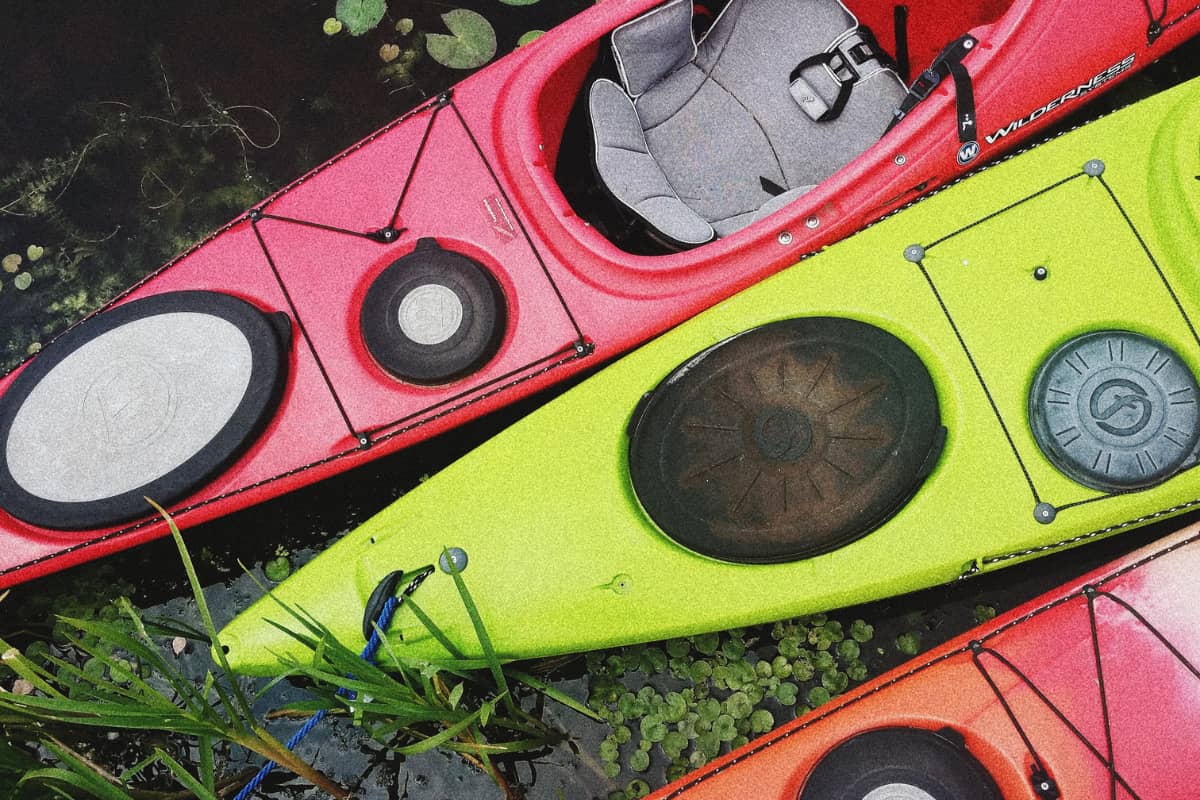
These holes are mounted on the sides of your boat.
The engineers include bulkheads in each kayak’s hull to allow water to drain through them, preventing you from sinking.
Aside from making your kayak look cool, scupper holes also serve a vital purpose.
A kayak’s scupper holes are located at the lowest points of the boat, so you will usually find two in the front and two towards the back.
Any excess water that enters your boat from paddle splashes or large waves will drain out of these scupper holes, allowing you to remain above water.
The holes force water to leave the boat and eliminate the need for you to bring extra draining equipment, like a bilge pump.
What Is A Scupper Plug, And When Should You Use It?
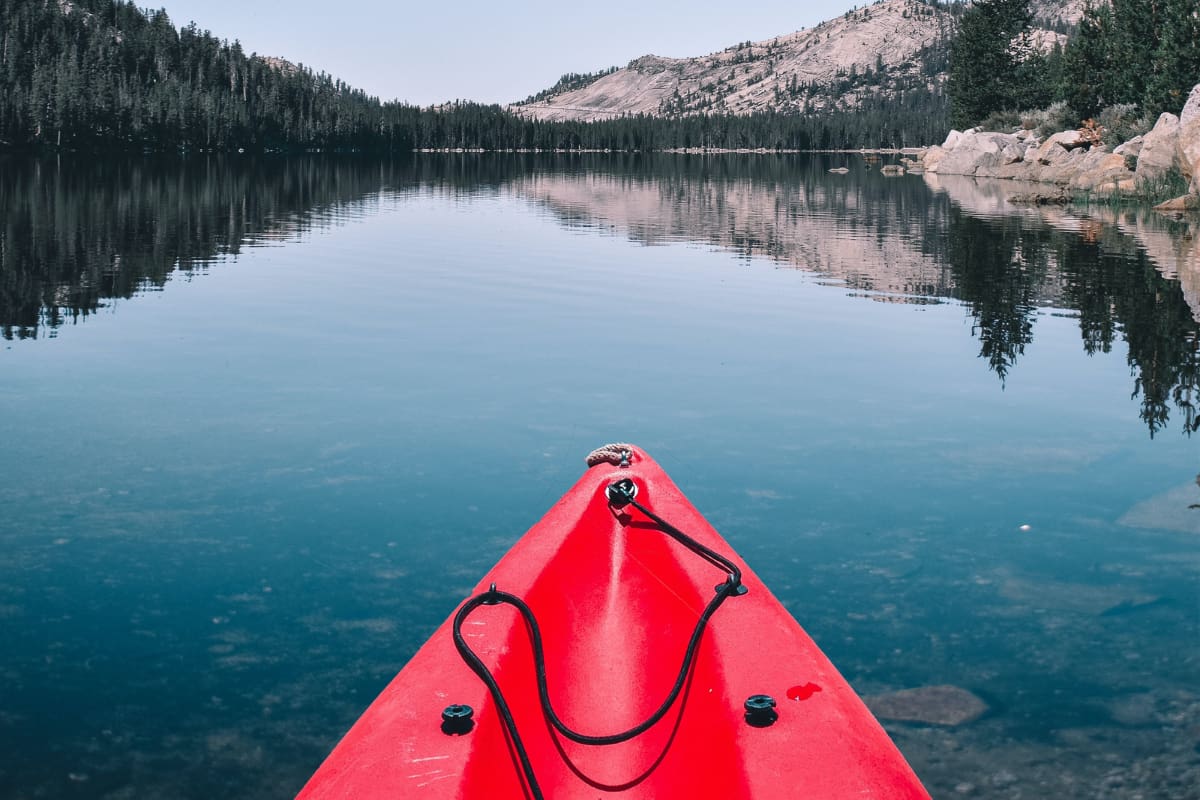
If your kayak features scupper holes, you’ll also need to know how to use scupper plugs.
You’ll need to insert these to plug up your scupper holes anytime your kayak is beached, moved, or stored.
You can also use scupper plugs out on the water if it seems like more water is getting in through these holes than flushing out.
Blocking the water’s entry points is especially useful if you’re paddling on cold water and you can feel it splashing up through the holes.
Most scupper plugs are made of plastic or rubber.
There are several areas of a kayak where water tends to pool, so you’ll need to plug holes at times to direct the water out more efficiently.
Are all scupper plugs universal?
A universal plug can be purchased from a variety of online and local retailers that sell equipment for sit-on-top kayaks.
For example, cone-shaped universal scupper plugs will fit in most kayaks.
To ensure a water-tight fit, some plugs also include a screw-in design.
It’s very easy to install scupper plugs – it simply involves either screwing or pushing the plug into the hole.
Some people create their own DIY scupper plugs using foam practice golf balls or other squishy materials that can fill the holes.
Making your own scupper plugs can even be a fun way to customize your kayak.
Scupper valves are a more expensive kind of plug that serves a dual function.
Scupper valves are designed to let water drain out from the boat without letting any water splash back up inside.
If you normally go kayaking on flat, clam bodies of water, these valves aren’t necessary.
However, they are especially handy for those who kayak on rougher waters.
How Do Scupper Holes And Plugs Work?
Before putting your kayak on the water, remove the plugs and leave the scupper holes open.
It may seem counterintuitive to leave holes in the bottom of your boat, but trust that the kayak designers knew what they were doing!
Leaving the holes open, especially when you’re on choppy water, ensures that any excess water that splashes into and accumulates in the bottom of your kayak is drained out.
This will prevent water from collecting and weighing down your kayak.
Scupper Plugs Help You Stay Safe When Kayaking!
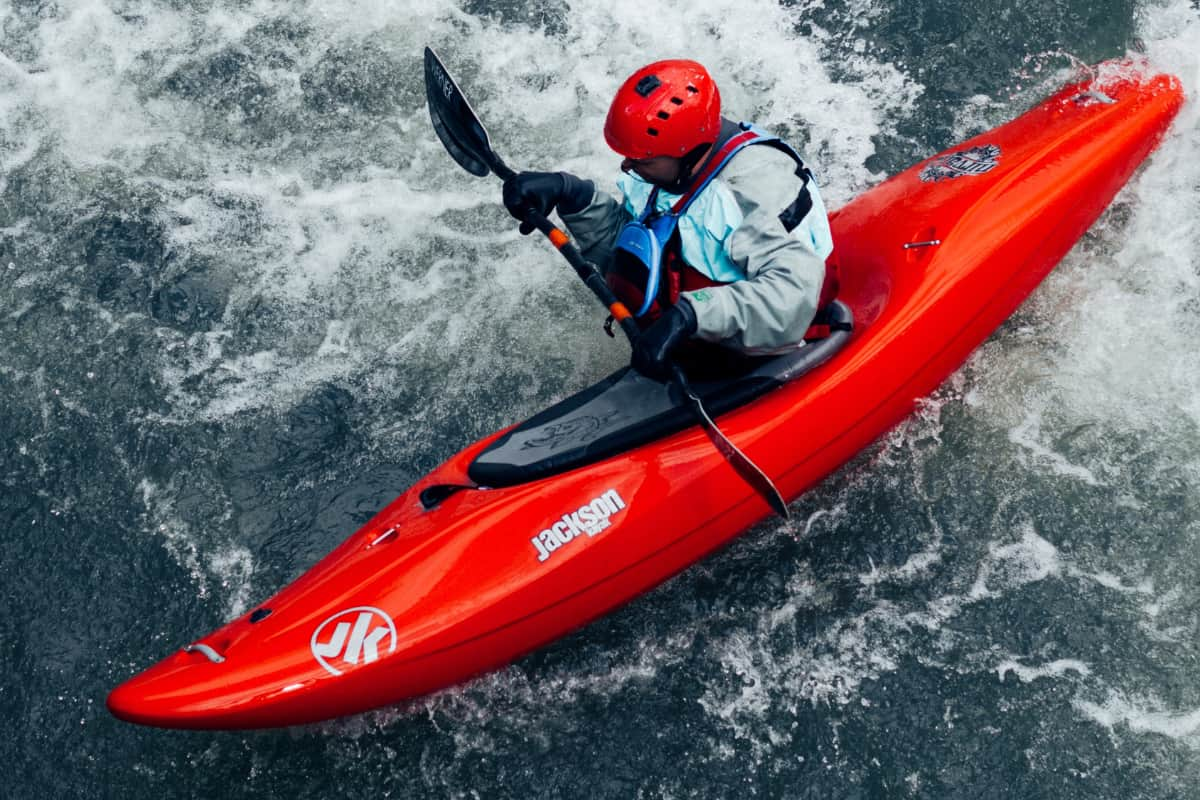
Knowing when and how to use your kayak’s scupper holes is crucial.
Their self-bailing feature makes your journey much easier, since you won’t have to keep stopping to bail water out of the boat yourself.
When you kayak, you will end up with a bit of water in the bottom of your boat no matter how careful you are.
Those who enjoy kayak fishing will usually get even more water inside their boats.
Keep in mind that when you use a sit-on-top kayak, you won’t have a lot of extra storage space.
Self-bailing holes prevent you from having to bring extra equipment (like a sponge or bilge pump).
So you might be thinking, if these holes are so efficient, do you even need scupper plugs?
The answer is really a personal choice, but many feel that scupper plugs are worth the small investment.
It’s helpful to have scupper plugs so that you’re prepared for any water and weather conditions you might face.
For example, if you’re floating down a cold river and find that icy water is entering the boat through the scupper holes and freezing your toes, you’ll be glad you brought the plugs along!
How Can You Tell If You Need Kayak Drain Plugs Or Kayak Scupper Plugs?
Unlike scupper plugs, drain plugs are primarily present in sit-in kayaks, and they are used to remove any water that has accumulated inside your boat after a day out on the water.
Scupper plugs, which are similar, but have a few key differences, are found in sit-on-top kayaks.
Even though they sound similar, scupper plugs are different from drain plugs, because they perform two different functions.
The scupper holes in sit-on kayaks are often smaller than drain holes, and they need to let water inside the boat drain out, while keeping the water underneath the boat from getting in.
Drain holes are only used when you need to empty a boat, like a sit-inside kayak.
This is why scupper plugs are often not used while you’re out on the water in a sit-on-top kayak, whereas drain plugs should always be used while you’re on the water in a sit-inside kayak.
Otherwise, if the drain plug isn’t inserted into the drain hole, too much water can enter your sit-inside boat.
Can You Use A Kayak Without A Scupper Plug?
Rest assured, scupper plugs are not absolutely necessary – especially in the summer, when you may not mind a little water splashing your way, or in the winter as long as you come prepared with a dry suit!
Scupper plugs are particularly beneficial for beginner kayakers who may be uncomfortable leaving the scupper holes open.
However, scupper plugs are not a requirement, and your kayak can function fine without them in almost all conditions.
Keep in mind that scupper plugs can only be used with a sit-on-top kayak that has scupper holes.
So, if your kayak doesn’t have any scupper holes, then don’t worry — you won’t need a scupper plug.
Conclusion
As long as you know what type of boat you have, and which kinds of holes or plugs it uses, you can decide accordingly.
So, there you have it! Everything you need to know about scupper holes and plugs.
Have fun kayaking!
Table of Contents


